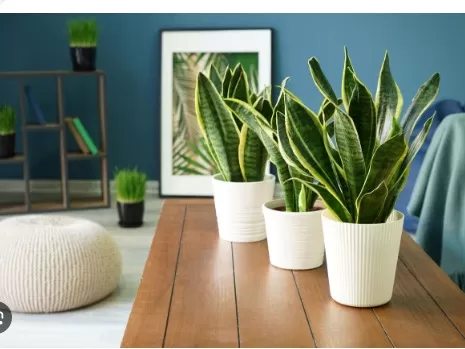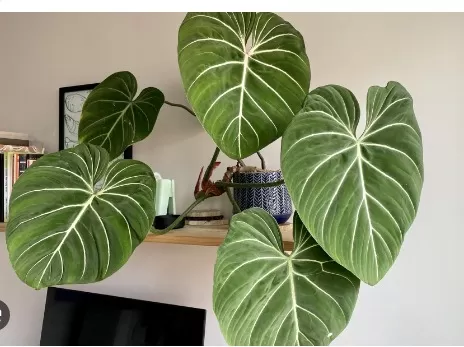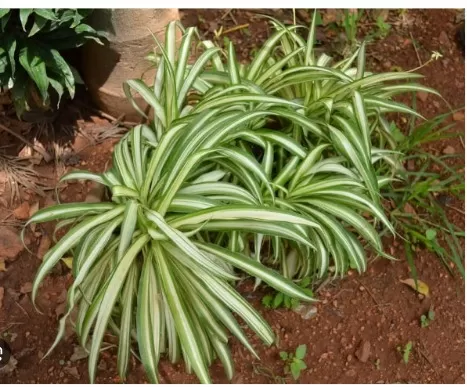Indoor Air Fresheners: 5 Low-Maintenance Houseplants. Houseplants have been studied for their ability to improve indoor Air Quality, providing a range of health benefits. Research supports the idea that certain plants can effectively remove toxins and pollutants from the air, creating a cleaner and healthier environment inside your home. In addition to their air-cleaning properties, many houseplants are also low-maintenance, making them a convenient choice for enhancing your living space.
If you’re interested in incorporating air-purifying plants into your home, there are several varieties that are known for their effectiveness in filtering out harmful substances. Examples include the spider plant (Chlorophytum comosum), pothos (Epipremnum aureum), snake plant (Sansevieria trifasciata), peace lily (Spathiphyllum spp.), and aloe vera (Aloe barbadensis). These plants are not only visually appealing but also require minimal care, making them ideal for both experienced and novice gardeners.
By introducing these low-maintenance houseplants into your living space, you can enjoy the dual benefits of improved indoor air quality and the beauty of nature in your home.
Do Houseplants Actually Purify the Air?

The idea that houseplants can effectively cleanse the air is a popular belief, but the reality is not as straightforward.
While there are numerous benefits to having houseplants in your home, such as enhancing the ambiance, improving mood and focus, providing natural cooling, and even having medicinal properties, their ability to clean the air is somewhat limited.
In 1989, NASA conducted a study that initially suggested houseplants could effectively remove volatile organic compounds (VOCs) from the air.
This led many individuals to choose specific plant species under the assumption that they would actively purify the indoor air. However, recent research has shown that the NASA study was conducted in a controlled environment that does not accurately reflect typical household conditions.
To effectively purify the air, you would need a larger number of houseplants than most homes can accommodate.
Nonetheless, the houseplants studied by NASA still have merits worth considering.
Although they may not clean the air to the extent previously believed, these plants are easy to care for and offer other benefits.
Dracaena: Easy-to-Care-for Houseplants with Varied Varieties
Dracaena is a popular genus of houseplants, with several notable varieties including Janet Craig (Dracaena deremensis), Warneck (Dracaena deremensis ‘Warneckii’), Cornstalk (Dracaena fragrans ‘Massangeana’), and Red-Edged Dracaena (Dracaena marginata).
These plants are characterized by their bushy nature and spiky leaves. One of the key advantages of dracaenas is their ease of care, as they can tolerate low humidity, infrequent watering, and low light conditions.
Dracaenas have become popular choices for indoor spaces due to their adaptability to different environmental conditions.
They can thrive in areas with limited natural light, making them suitable for rooms with few windows or in office spaces with minimal sunlight exposure. Additionally, dracaenas are known for their ability to withstand low humidity levels, making them ideal for environments where moisture levels may be a challenge to maintain.
Another advantage of dracaenas is their forgiving nature when it comes to watering.
These plants can withstand periods of drought and are not demanding in terms of frequent watering. This feature makes them a practical choice for those who may occasionally forget to water their plants or have busy schedules.
While dracaenas may not possess the air-purifying abilities initially thought to be significant, they still offer aesthetic value and can contribute to creating a vibrant and lively atmosphere within your home.
Their attractive foliage, combined with their easy care requirements, makes dracaenas an appealing choice for plant enthusiasts of all experience levels.
Philodendron: Low-Maintenance Houseplants with Air Purifying Qualities

Philodendron plants have long been favored as houseplants, and some varieties are particularly effective at freshening the air in your home.
Notable varieties that excel in this regard include Heartleaf (Philodendron scandens ‘oxycardium’), Elephant Ear (Philodendron domesticum), and Selloum (Philodendron selloum). These plants have glossy, vibrant green foliage and can grow to substantial sizes.
One of the key advantages of philodendrons is their ability to thrive with minimal care.
They are known for their resilience and adaptability, making them suitable for both experienced plant enthusiasts and beginners. Philodendrons can tolerate a wide range of light conditions, from bright indirect light to lower light levels, making them versatile choices for different areas of your home.
In addition to their aesthetic appeal, philodendrons have air-purifying qualities.
They can help improve indoor air quality by removing certain toxins and pollutants, making your living space fresher and healthier. While they may not possess the same level of air-purifying capabilities as initially believed, their contribution to creating a cleaner environment should not be overlooked.
Another advantage of philodendrons is their potential for impressive growth.
Given the right conditions and care, these plants can become quite large, adding a lush and vibrant touch to your indoor space. However, they can also be pruned and maintained at a smaller size if desired, making them adaptable to different preferences and available space.
Overall, philodendrons are excellent choices for individuals seeking low-maintenance houseplants with the added benefit of air purifying qualities.
Their glossy foliage, ability to thrive in various light conditions, and their potential for substantial growth make them popular and rewarding additions to any indoor plant collection.
English Ivy: Versatile Houseplant for Pots, Hanging Baskets, and More
English Ivy (Hedera helix) is a versatile houseplant that adapts well to different growing conditions.
It can be grown in pots or hanging baskets, and its trailing vines can also be trained to climb a trellis or railing. Although English Ivy has a reputation for being an aggressive grower, it can be easily controlled through regular pruning, allowing you to maintain the plant at virtually any size and shape.
One of the notable characteristics of English Ivy is its ability to thrive in various settings.
It can tolerate both indoor and outdoor environments, making it a flexible choice for different spaces. When grown indoors, English Ivy adds a touch of natural beauty with its cascading vines, creating an attractive display in hanging baskets or pots.
Alternatively, when provided with the appropriate support, it can climb and cover vertical surfaces, adding a lush and green element to trellises or railings.
While English Ivy is known for its vigorous growth, it can be kept in check through routine pruning.
By trimming back the plant regularly, you can manage its size and prevent it from becoming overly invasive. This makes English Ivy suitable for smaller spaces or for those who prefer a more compact and controlled plant.
In addition to its versatility and manageable growth, English Ivy also offers the benefits of air purification.
It has been shown to help filter and improve indoor air quality by removing certain pollutants, making it a beneficial addition to your living environment.
Overall, English Ivy is a versatile houseplant that can be easily cultivated in pots, hanging baskets, or trained to climb.
Its growth can be controlled through regular pruning, allowing you to customize its appearance to suit your preferences and available space. With its aesthetic appeal and potential air-purifying qualities, English Ivy is a popular choice among indoor plant enthusiasts.
Spider Plant: Easy-to-Grow and Propagate Houseplant

The Spider Plant (Chlorophytum comosum) is widely regarded as one of the easiest houseplants to grow and propagate.
This plant is known for its ability to produce “baby spiders” or plantlets at the end of long, wiry stems, making it easy to share and expand your collection. Spider Plants thrive in moderate sunlight and prefer humid environments, which makes them well-suited for placement in bathrooms or kitchens.
One of the key advantages of Spider Plants is their low-maintenance nature.
They are resilient and forgiving, making them an excellent choice for beginners or those who may not have a green thumb. Spider Plants can adapt to a wide range of light conditions, from bright indirect light to partial shade, making them versatile for different areas of your home.
Spider Plants have the unique ability to produce “baby spiders” or plantlets, which can be easily propagated.
These plantlets can be detached from the mother plant and potted separately, allowing you to expand your collection or share them with friends and family. This characteristic of Spider Plants adds to their appeal and makes them an excellent choice for those who enjoy propagating and growing their plant collection.
In terms of placement, Spider Plants thrive in environments with moderate sunlight and higher humidity.
Bathrooms and kitchens, where humidity levels tend to be higher, are ideal locations for these plants. However, they can also adapt to other areas of your home as long as they receive sufficient indirect light and regular watering.
Spider Plants not only add a touch of greenery to your indoor space but also contribute to improving air quality.
They have been found to effectively remove certain indoor air pollutants, making them beneficial for creating a healthier living environment.
Overall, Spider Plants are highly recommended for their ease of care, ability to propagate readily, and adaptability to different light and humidity conditions.
Whether you’re a beginner or an experienced plant enthusiast, the Spider Plant is a reliable and rewarding choice for any home.
*The information is for reference only.